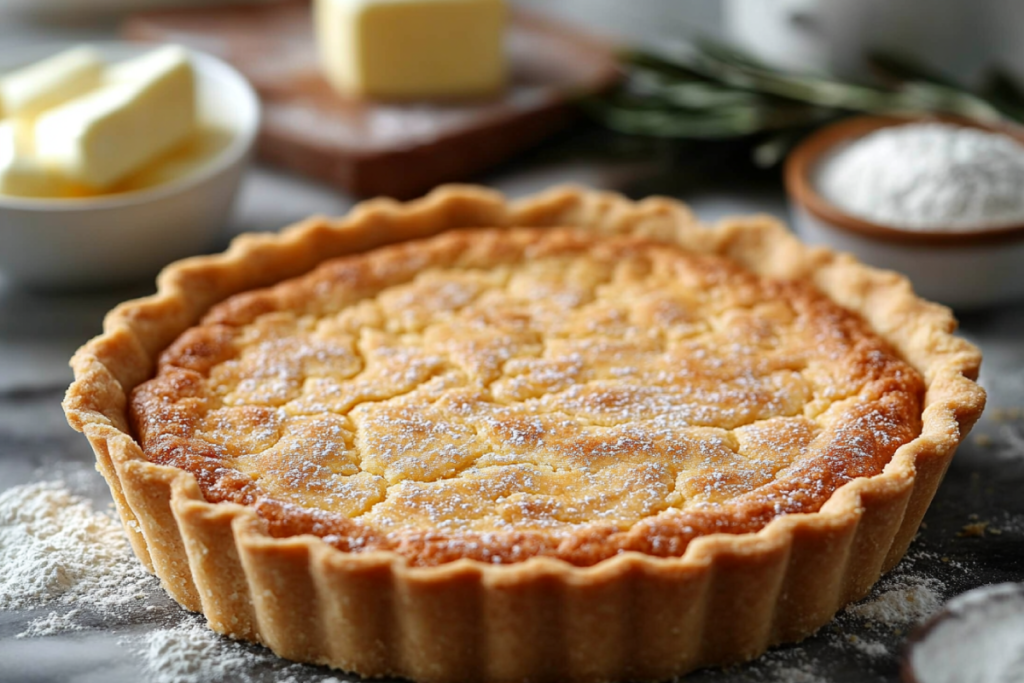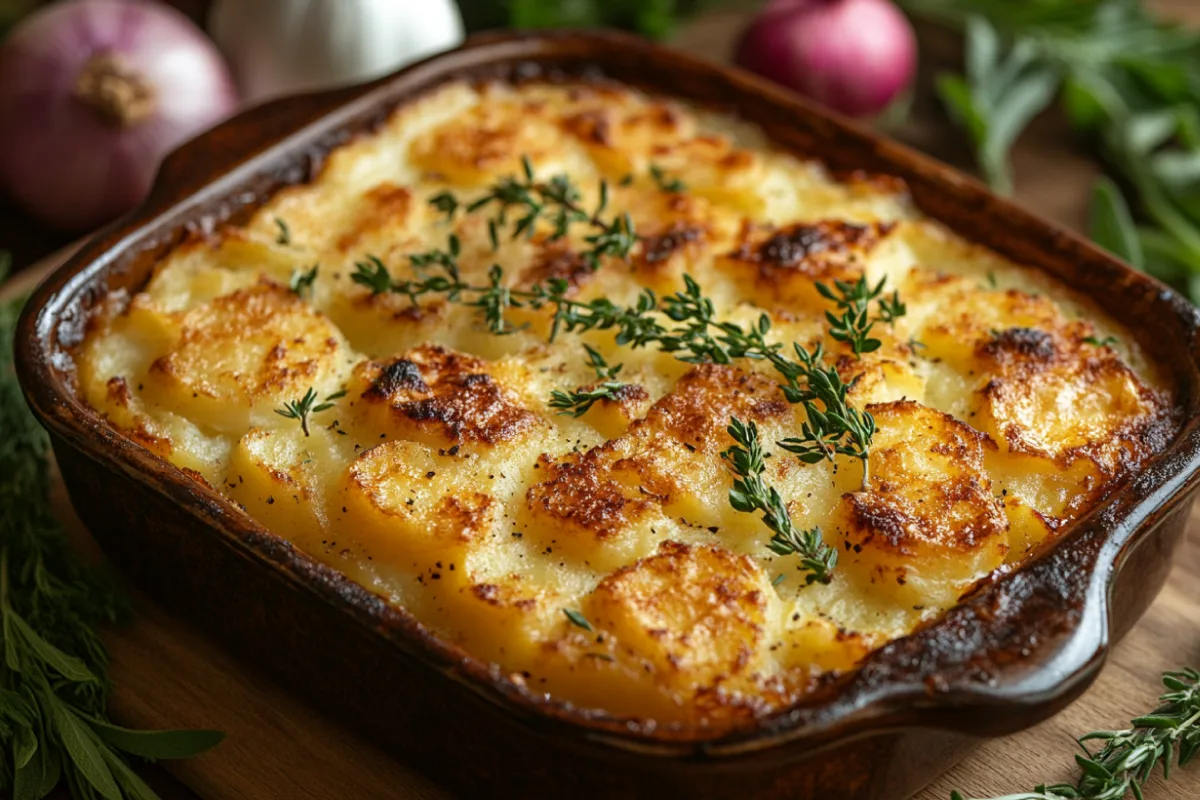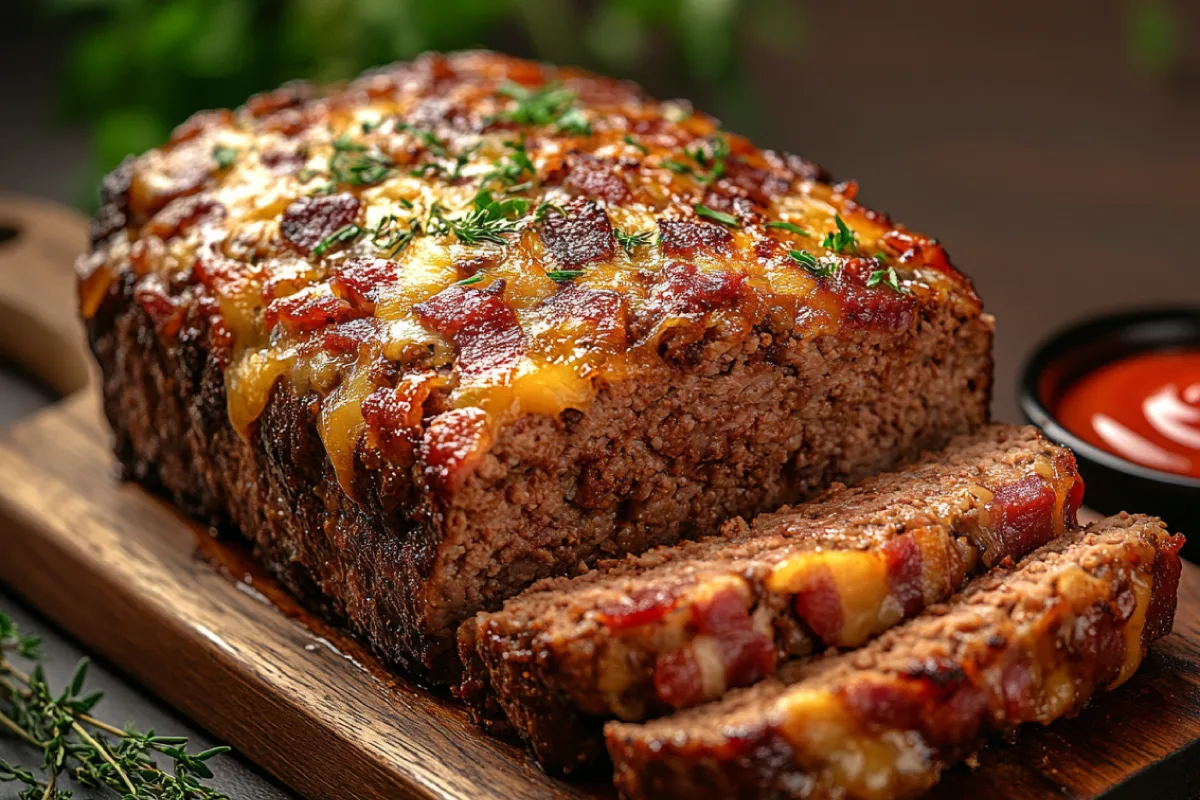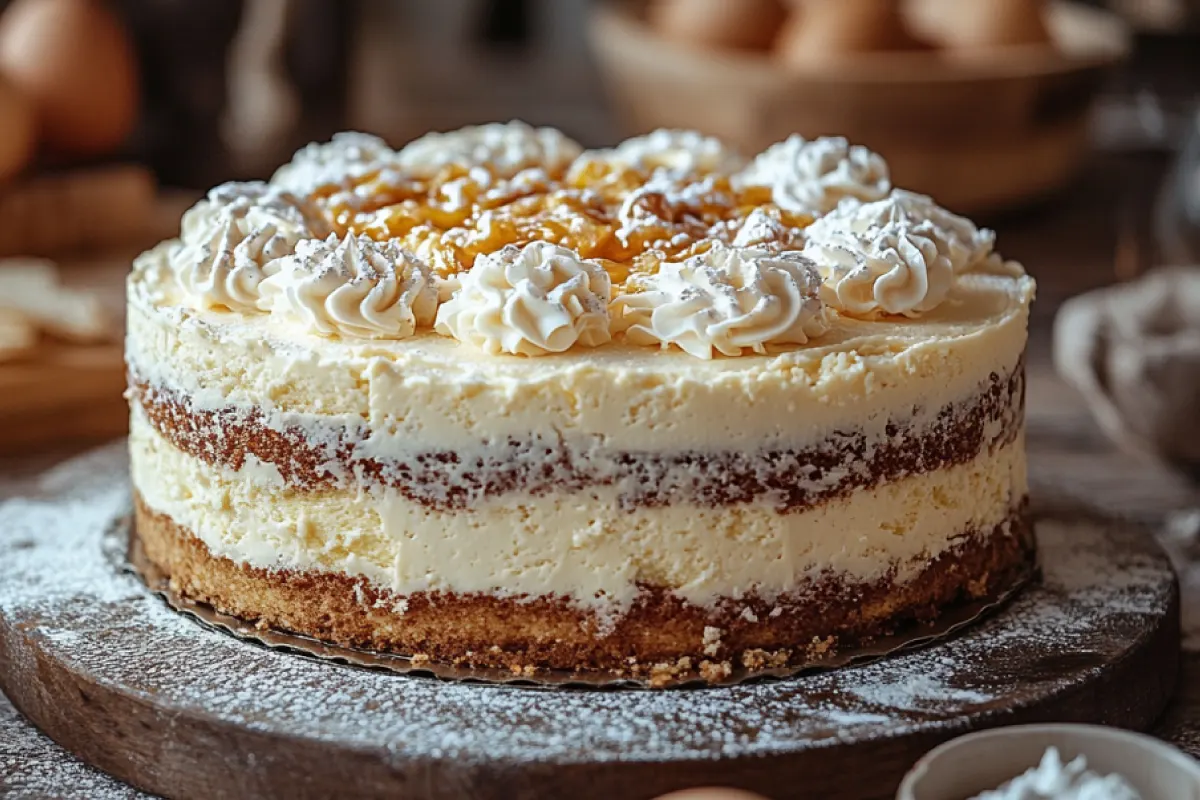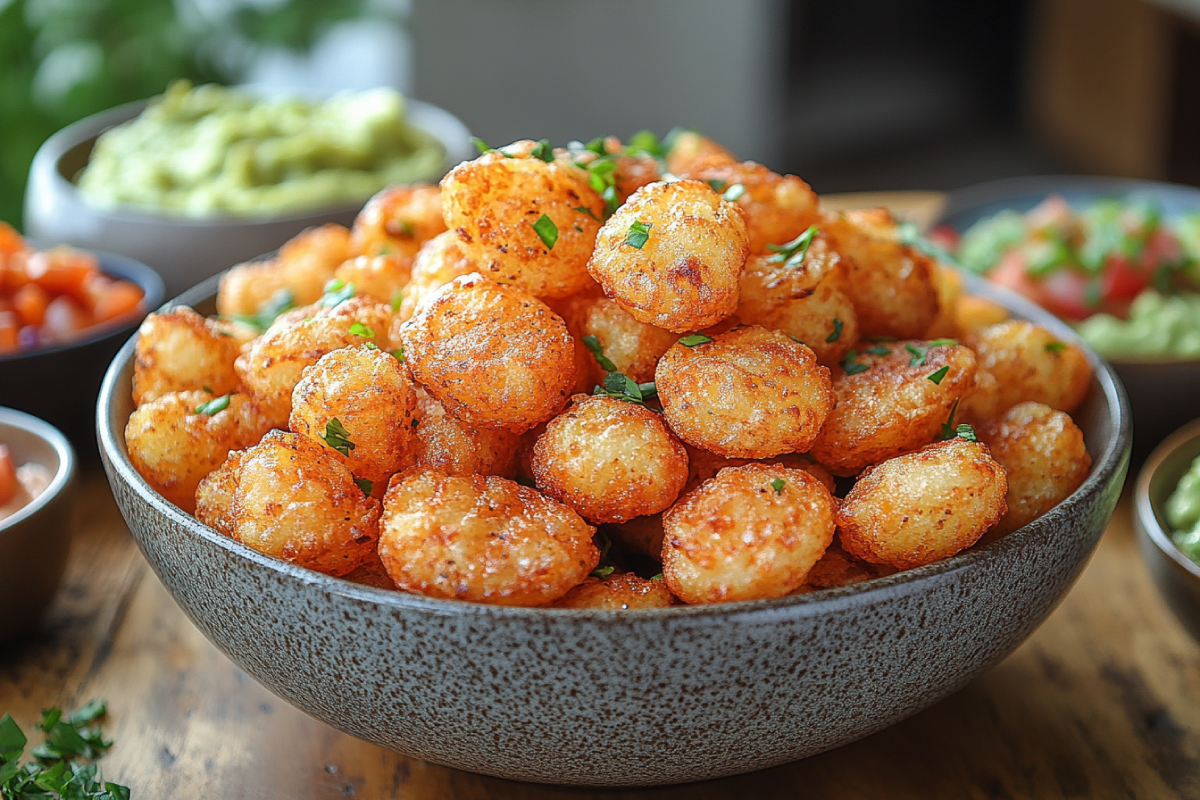What is shortbread crust made of? This timeless baking staple is loved for its crumbly texture and buttery richness. Whether you’re crafting a tart, cheesecake, or dessert bar, shortbread crust provides a flavorful and sturdy base, making it a favorite in kitchens around the world. Let’s explore the simple ingredients that make this crust so special.
What Is Shortbread Crust Made Of? A Deep Dive Into Its Ingredients
Shortbread crust owes its delicious simplicity to just three main ingredients: flour, sugar, and butter. Let’s delve deeper into each component to understand its role:
Flour: The Foundation of Shortbread Crust
Flour provides the structure and foundation of the crust. All-purpose flour is the most commonly used type, offering the right balance of protein and starch for a tender, crumbly texture. For those looking to experiment, variations like almond flour can be incorporated to add nuttiness and extra richness.
Types of Flour and Their Impact:
- All-purpose flour: The standard choice, producing a neutral and versatile crust.
- Cake flour: Results in a softer, more delicate texture.
- Gluten-free flour: A mix of gluten-free alternatives like rice flour and tapioca starch can be used for dietary preferences without sacrificing flavor.
Curious about how flour choices impact baking beyond shortbread? Learn more in Mastering the Art of Shortbread Crust.
Sugar: Adding Sweetness and Texture to Shortbread Crust
Sugar not only sweetens the crust but also contributes to its texture. Depending on the type of sugar used, the final product can vary slightly:
- Granulated sugar: Adds a subtle crunch and balances the butter’s richness.
- Powdered sugar: Creates a finer, melt-in-your-mouth texture ideal for delicate desserts.
- Brown sugar: Introduces a hint of molasses flavor for a deeper, caramel-like profile.
For festive variations using sugar creatively, check out recipes like Christmas Crack Cookies.
Butter: The Secret to a Buttery, Crumbly Shortbread Crust
Butter is the star ingredient in shortbread crust, responsible for its rich flavor and crumbly texture. It binds the flour and sugar together while imparting the signature buttery taste that defines shortbread.
Key Tips for Using Butter:
- Quality matters: Use high-quality, unsalted butter for the best flavor.
- Chilled butter: Keeps the dough manageable and prevents it from becoming greasy.
- Salted butter: If using, reduce or eliminate additional salt to avoid an overly salty crust.
Want to explore more buttery delights? Learn about the role of butter in classic desserts, like Buttermilk Pie.

Optional Ingredients for Variations
While the core ingredients remain constant, optional additions can elevate the shortbread crust and customize it to suit your dessert:
- Salt: Balances the sweetness and enhances the buttery flavor.
- Vanilla extract: Adds a subtle depth of flavor.
- Spices: Cinnamon, nutmeg, or cardamom can create seasonal variations.
- Ground nuts: Almonds, pecans, or hazelnuts add texture and flavor.
For more creative inspiration, read about other desserts perfect for the holidays, such as Christmas Trifle.
How to Make Shortbread Crust Step-by-Step
Making shortbread crust is as easy as mixing, pressing, and baking. Unlike traditional pie crusts that require careful rolling and chilling, shortbread crusts are fuss-free and forgiving. Here’s a step-by-step guide to creating the perfect crust:
Step 1: Gather Your Ingredients
To prepare a classic shortbread crust, you’ll need:
- 1 1/2 cups all-purpose flour
- 1/2 cup powdered sugar (or granulated sugar, depending on preference)
- 3/4 cup unsalted butter, cold and cubed
- 1/4 teaspoon salt (optional)
- 1 teaspoon vanilla extract (optional)
Step 2: Combine Dry Ingredients
In a large mixing bowl, sift together the flour and sugar. This step ensures a smooth and even texture in your crust, preventing clumps. If you’re adding salt or spices, include them in this step.
Step 3: Incorporate the Butter
Using a pastry cutter, fork, or clean hands, cut the cold butter into the dry ingredients. The mixture should resemble coarse crumbs. This step is crucial for achieving the signature crumbly texture of shortbread crust.
Pro Tip: Avoid overworking the butter to prevent a greasy crust. The dough should hold together when pinched but not be overly sticky.
Step 4: Press the Dough
Transfer the crumbly mixture into your prepared baking pan. Using your fingers or the back of a spoon, press the dough evenly into the bottom and slightly up the sides of the pan. Aim for an even thickness to ensure consistent baking.
Tips for Success:
- Use parchment paper for easy removal after baking.
- Prick the crust lightly with a fork to prevent air bubbles.
Step 5: Bake to Perfection
Preheat your oven to 350°F (175°C). Bake the crust for 15-20 minutes, or until the edges turn golden brown. Keep an eye on it, as overbaking can lead to a dry crust.
Let the crust cool completely before adding fillings. Shortbread crust firms up as it cools, creating a sturdy base for your dessert.
For troubleshooting tips, such as preventing sogginess or maintaining the ideal texture, explore tips for perfect crusts in baking.
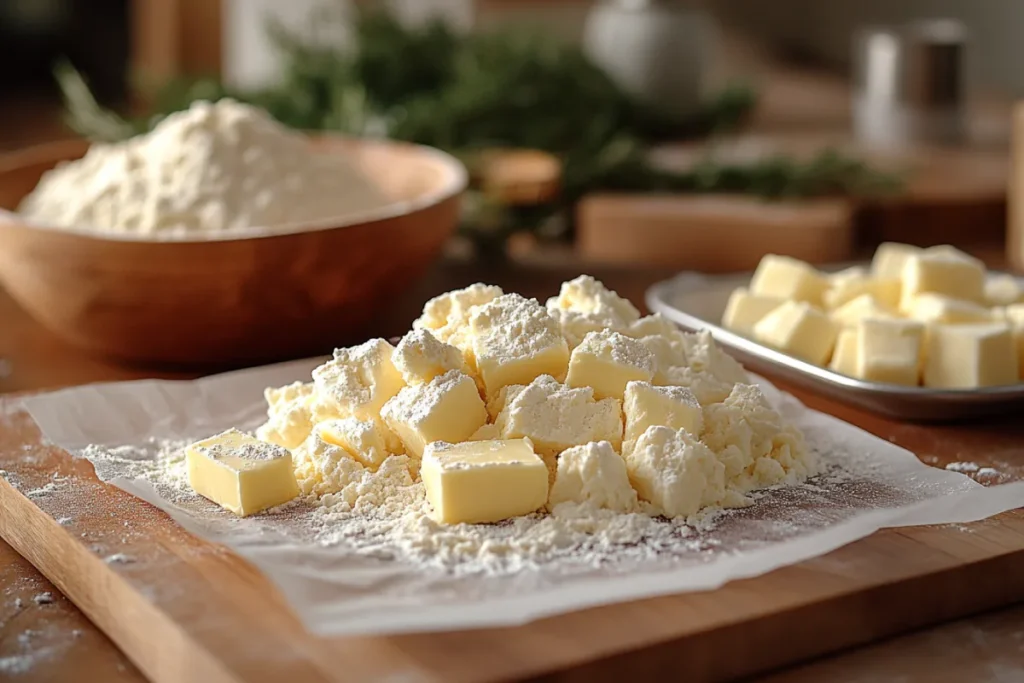
Tips for Perfect Shortbread Crust Every Time
Even though shortbread crust is straightforward, a few tips can help you achieve the best results:
- Keep ingredients cold: Especially the butter, to maintain the crumbly texture.
- Measure accurately: Too much flour can make the crust dry, while too much butter can make it greasy.
- Prebake for wet fillings: If you’re making a pie or tart with a wet filling, prebake the crust (also known as blind baking) to prevent sogginess.
- Chill before baking: For a firmer crust, chill the pressed dough for 15-30 minutes before baking.
Uses of Shortbread Crust
Shortbread crust isn’t just versatile; it’s essential for many beloved desserts. Here are some popular uses:
- Tarts: Lemon tart, chocolate ganache tart, or fruit tarts all pair beautifully with shortbread crust.
- Cheesecakes: A rich, creamy filling on a buttery shortbread base creates an irresistible dessert.
- Bars: Caramel bars, pecan bars, and raspberry bars benefit from the crumbly texture of this crust.
- Cookies: Roll and cut into shapes for quick shortbread cookies.
- Savory Variations: While less common, omitting sugar can transform this crust into a base for savory quiches or appetizers.
Common Variations of Shortbread Crust
Shortbread crust is highly adaptable, allowing bakers to experiment with flavors and textures to suit different recipes or dietary needs. Here are some popular variations:
Gluten-Free Shortbread Crust
For those avoiding gluten, a combination of gluten-free flours works wonderfully:
- Substitute all-purpose flour with almond flour, rice flour, or a gluten-free all-purpose mix.
- Add a binding agent like xanthan gum to improve the dough’s structure.
This version retains the crust’s crumbly texture while catering to dietary restrictions.
Chocolate Shortbread Crust
Chocolate lovers can elevate the crust by incorporating cocoa powder:
- Replace 2-3 tablespoons of flour with unsweetened cocoa powder.
- Optionally, add chocolate chips or chunks for extra richness.
This variation pairs beautifully with fillings like mint, caramel, or raspberry.
Nut-Infused Shortbread Crust
Adding finely ground nuts introduces a nutty flavor and enhanced texture:
- Almonds, pecans, or hazelnuts are popular choices.
- Substitute up to 1/4 cup of the flour with ground nuts for subtle flavor.
Nutty shortbread crust works exceptionally well with fruit-based desserts or chocolate fillings.
Looking for more inspiration? Discover how crusts and other baked goods are transformed in Cinnamon Roll Cheesecake.
Vegan Shortbread Crust
For a plant-based alternative:
- Replace butter with vegan butter or solid coconut oil.
- Use a mix of powdered sugar and almond flour to enhance the texture.
Vegan shortbread crust delivers the same buttery richness without animal products.
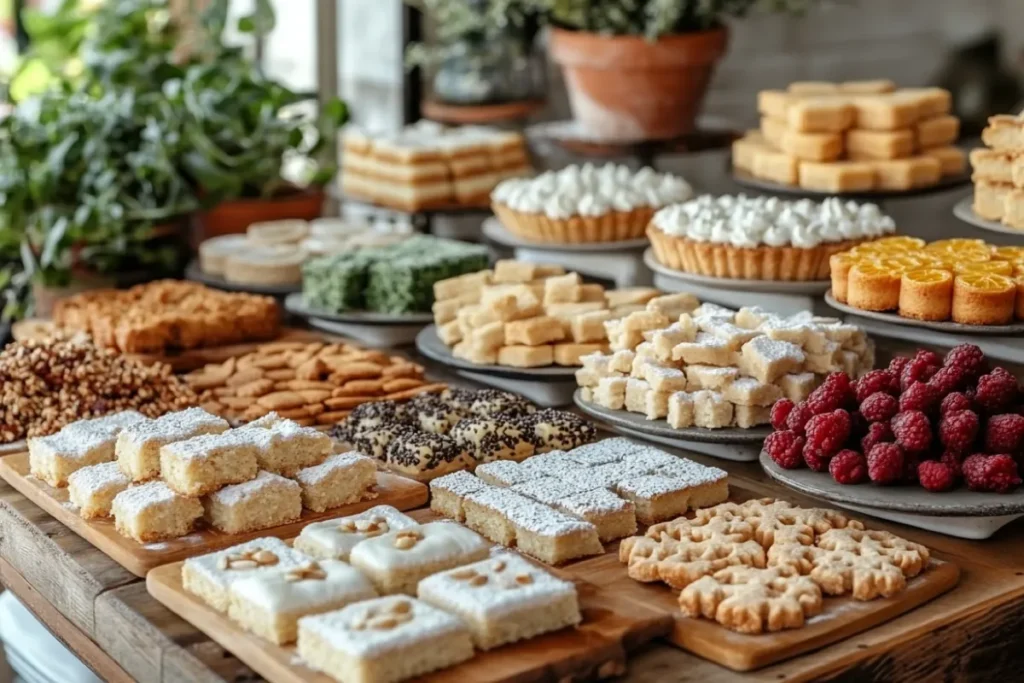
The History of Shortbread Crust
Shortbread crust, a close cousin of traditional Scottish shortbread cookies, has origins dating back to the 12th century. The recipe evolved from medieval “biscuit bread,” a twice-baked bread made from leftover dough. Over time, bakers refined it by adding butter, creating the rich and crumbly texture we associate with shortbread today.
The use of shortbread crust in desserts gained popularity in Europe during the Renaissance, particularly in Scotland. As butter became more accessible, shortbread evolved into a symbol of luxury, often served during special occasions like weddings and holidays. Today, this versatile crust is cherished worldwide for its simplicity and ability to complement a wide variety of sweet and savory fillings.
The Science Behind Shortbread Crust: Why It Works
The magic of shortbread crust lies in its chemistry. Each ingredient plays a crucial role in creating its signature texture and flavor:
- Butter: The high-fat content of butter contributes to the crust’s rich taste and tender, crumbly texture. Butter coats the flour particles, inhibiting gluten formation and ensuring the crust doesn’t become tough.
- Flour: The ratio of flour to fat affects the texture. Too much flour results in a dense, dry crust, while too little flour makes the dough greasy and hard to work with.
- Sugar: Sugar acts as a tenderizer by preventing gluten development. It also adds sweetness and enhances the buttery flavor.
Understanding these interactions allows bakers to tweak recipes and create variations without compromising the crust’s integrity.
Advanced Techniques for Perfecting Shortbread Crust
If you’ve mastered the basics, consider incorporating these advanced techniques to take your shortbread crust to the next level:
1. Chilling for Better Texture
Cold ingredients are crucial when making shortbread crust. After pressing the dough into the pan, chilling it for at least 30 minutes before baking helps firm up the butter. This step prevents the crust from spreading or shrinking during baking and enhances its crumbly texture.
2. Blind Baking for Wet Fillings
If your dessert has a liquid-based filling (like custard or fruit), blind baking the crust ensures it remains crisp and sturdy. Line the pressed dough with parchment paper and fill it with pie weights or dried beans. Bake for 10–15 minutes, remove the weights, and continue baking until lightly golden.
3. Adding Layers for Extra Flavor
For a more complex flavor profile, consider adding layers to your crust. For example, brushing the prebaked crust with melted chocolate creates a moisture barrier and adds a hint of richness. Similarly, spreading a thin layer of fruit preserves can complement tart or cheesecake fillings.
4. Incorporating Aromatics
Infuse your butter with herbs, spices, or citrus zest before incorporating it into the dough. For example, rosemary or lavender butter can add a subtle yet sophisticated twist to your crust.
Global Variations of Shortbread Crust
Shortbread crust has inspired countless adaptations across the globe, reflecting local ingredients and culinary traditions. Here are some regional variations:
1. Italian Almond Shortbread (Pasta Frolla)
In Italy, pasta frolla is a shortbread-like crust often used for tarts and cookies. It incorporates almond flour and sometimes a splash of citrus liqueur, such as limoncello, for a fragrant and nutty flavor.
2. French Sablé Crust
Sablé, meaning “sandy” in French, is a refined version of shortbread crust. It uses egg yolks and powdered sugar, creating a finer, melt-in-your-mouth texture. This crust is popular in delicate French tarts, like tarte au citron.
3. Japanese Matcha Shortbread Crust
Japanese bakers often incorporate matcha (green tea powder) into their shortbread crusts for a unique, earthy flavor. This vibrant green crust pairs beautifully with fillings like sweet red bean paste or white chocolate.
4. Latin American Dulce de Leche Shortbread Crust
In Latin America, dulce de leche is sometimes mixed into the dough or used as a filling with shortbread crust. This combination creates a rich, caramel-like dessert that’s perfect for indulgent occasions.
Creative Recipe Ideas Using Shortbread Crust
Shortbread crust’s adaptability makes it a fantastic base for creative desserts. Here are some unique ideas to try:
1. Salted Caramel Shortbread Bars
Layer a baked shortbread crust with gooey salted caramel and a drizzle of dark chocolate. Sprinkle sea salt on top for a sweet-and-savory treat.
2. Chai-Spiced Cheesecake Bars
Infuse your shortbread crust with chai spices like cinnamon, cardamom, and cloves. Top it with a creamy cheesecake layer for a warm, aromatic dessert.
3. Tropical Coconut-Lime Tart
Incorporate shredded coconut into the crust and fill it with a tangy lime curd. Garnish with toasted coconut flakes for a tropical twist.
4. Pumpkin Pie Bars with Pecan Shortbread Crust
Add ground pecans to the crust and layer it with spiced pumpkin filling. These bars offer a fall-inspired take on the classic pie.
5. Espresso-Chocolate Tart
Mix instant espresso powder into the shortbread dough for a coffee-flavored crust. Pair it with a rich chocolate ganache filling for a dessert that’s both bold and indulgent.
Common Mistakes to Avoid
Even with a straightforward recipe, a few missteps can lead to subpar results. Here are some common pitfalls and how to avoid them:
1. Overmixing the Dough
Overworking the butter and flour can activate gluten, leading to a tough crust. Mix the ingredients just until they resemble coarse crumbs.
2. Skipping the Chilling Step
Chilling isn’t just for flavor—it prevents the crust from becoming greasy or shrinking during baking. Don’t skip this step!
3. Inaccurate Measurements
Baking is a science, and small inaccuracies can throw off the balance of ingredients. Use a digital scale for precise measurements.
4. Using Warm Butter
Warm butter melts too quickly, making the dough sticky and hard to work with. Always start with cold butter for the best results.
5. Baking at Too High a Temperature
High oven temperatures can cause the edges of the crust to burn before the center is fully cooked. Stick to 350°F (175°C) for even baking.
Pairing Shortbread Crust with Fillings
Choosing the right filling can elevate your shortbread crust creations. Here are some pairing ideas:
- Fruity Fillings: Lemon curd, berry compotes, or tropical fruits like mango complement the buttery crust.
- Creamy Fillings: Cheesecake, panna cotta, or whipped mascarpone add richness to balance the crust’s crumbly texture.
- Nut-Based Fillings: Pecan or almond fillings enhance the crust’s natural nuttiness.
- Chocolate Fillings: Ganache, mousse, or chocolate custards are perfect for indulgent desserts.
The Versatility of Shortbread Crust in Savory Dishes
While shortbread crust is primarily associated with sweet treats, it can also shine in savory applications. Simply omit the sugar and add herbs or spices to the dough. Here are some savory ideas:
- Quiches: Use shortbread crust as a buttery base for quiches filled with cheese, vegetables, or meats.
- Savory Tarts: Pair the crust with caramelized onions, goat cheese, and fresh thyme.
- Appetizer Bites: Create mini tartlets with fillings like smoked salmon, cream cheese, and dill.
FAQ
Can I make shortbread crust ahead of time?
Absolutely! You can prepare the dough and store it in the refrigerator for up to three days. Alternatively, you can freeze the pressed crust for up to three months. Thaw it before baking as needed.
Why is my shortbread crust too crumbly?
Overmixing or adding too much flour can lead to a crumbly crust. Ensure you measure ingredients accurately and mix just until the dough comes together.
Can I use salted butter in shortbread crust?
Yes, but reduce or omit any additional salt in the recipe to balance the flavors.
Should I grease the pan before pressing in the dough?
It’s generally unnecessary if you’re using a high-butter dough. For added assurance, line the pan with parchment paper for easy removal.
How do I prevent my crust from shrinking?
Chilling the dough before baking helps prevent shrinkage by allowing the butter to firm up and reducing over-expansion.
Can I add flavors like citrus or spices to shortbread crust?
Definitely! Citrus zest, cinnamon, or nutmeg can be mixed into the dough for a unique twist.
Table of Contents
Conclusion
Shortbread crust is a simple yet elegant foundation for countless desserts. Made with just flour, sugar, and butter, its versatility allows for endless customization, from gluten-free and vegan options to chocolate or nut-infused variations. Whether you’re crafting a classic tart, a decadent cheesecake, or buttery dessert bars, mastering shortbread crust is a skill that opens the door to a world of culinary creativity.
With its melt-in-your-mouth texture and rich flavor, shortbread crust proves that sometimes, the simplest ingredients create the most unforgettable results. Give it a try in your next dessert, and enjoy the magic of this timeless baking staple!

